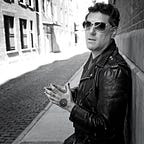When Medicine and Metaphysics Got Along
The extraordinary career of scientist Richard C. Cabot is a case study in collaboration — and results
Amid a wave of medical licensing laws, the early 20th century was not a promising moment for religiously or psychologically oriented approaches to medicine.
Most physicians regarded any form of mind or faith-based methods, even when used as complementary treatments, as smacking of Christian Science, a philosophy they considered cultish and dangerous, a reactive summary judgment.
Protestant churches took a similar view. While Catholicism had long maintained measured faith in healing miracles and shrines, most Protestant seminaries and pulpits saw religious healing as something that had ended with the apostolic era.
Indeed, during the Reformation, Protestant movements often cast aspersions on the healing claims of the Catholic Church, considering talk of medical miracles as nothing more than the church’s attempt to shore up its role as the exclusive organ of God’s word on earth. That attitude more or less prevailed at the start of the 20th century.
A few early-20th century physicians grudgingly used bread pills or sugar remedies to placate hypochondriacal patients, and some doctors recognized the usefulness of…
